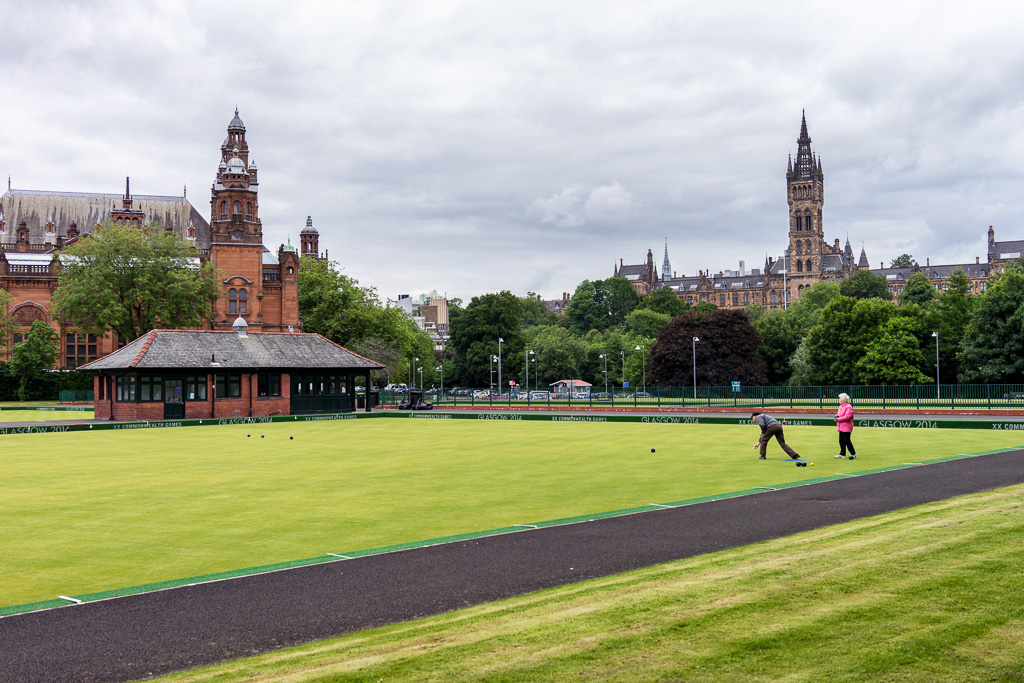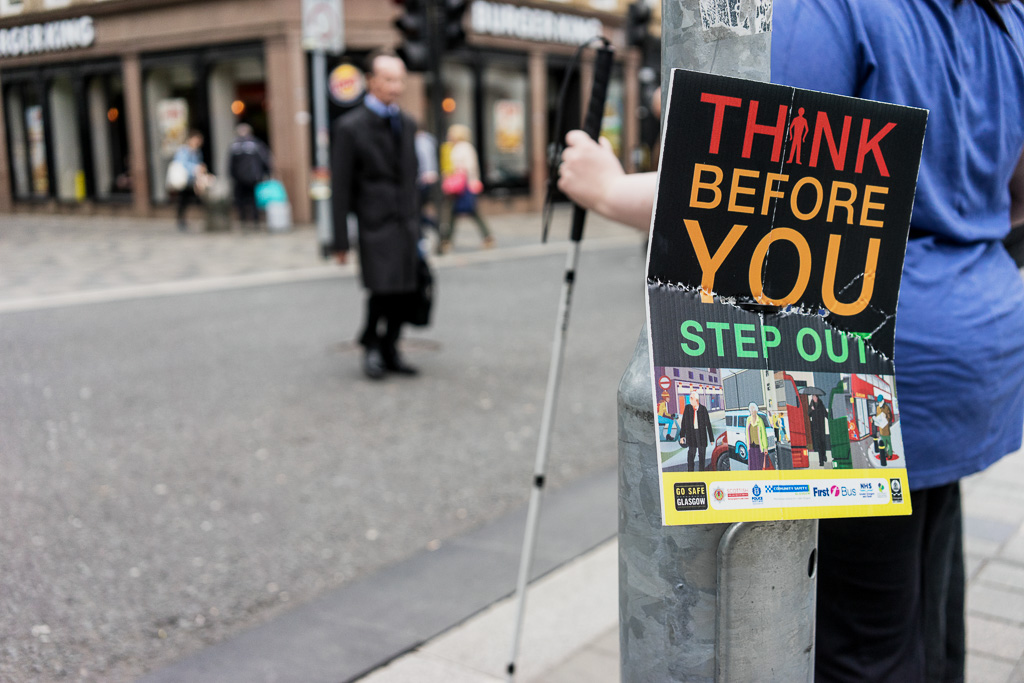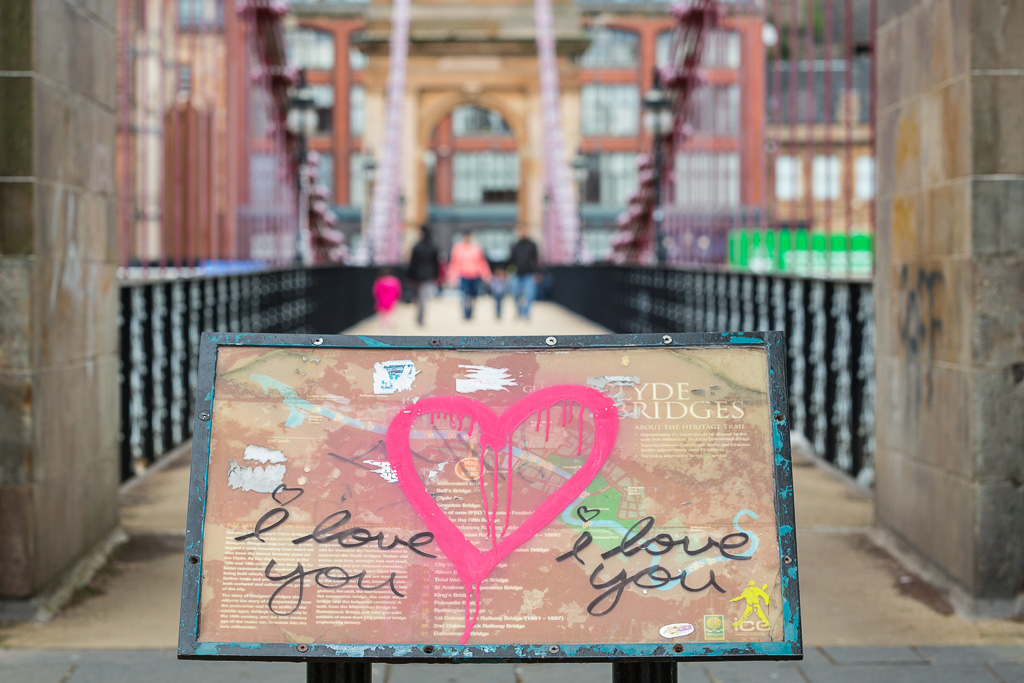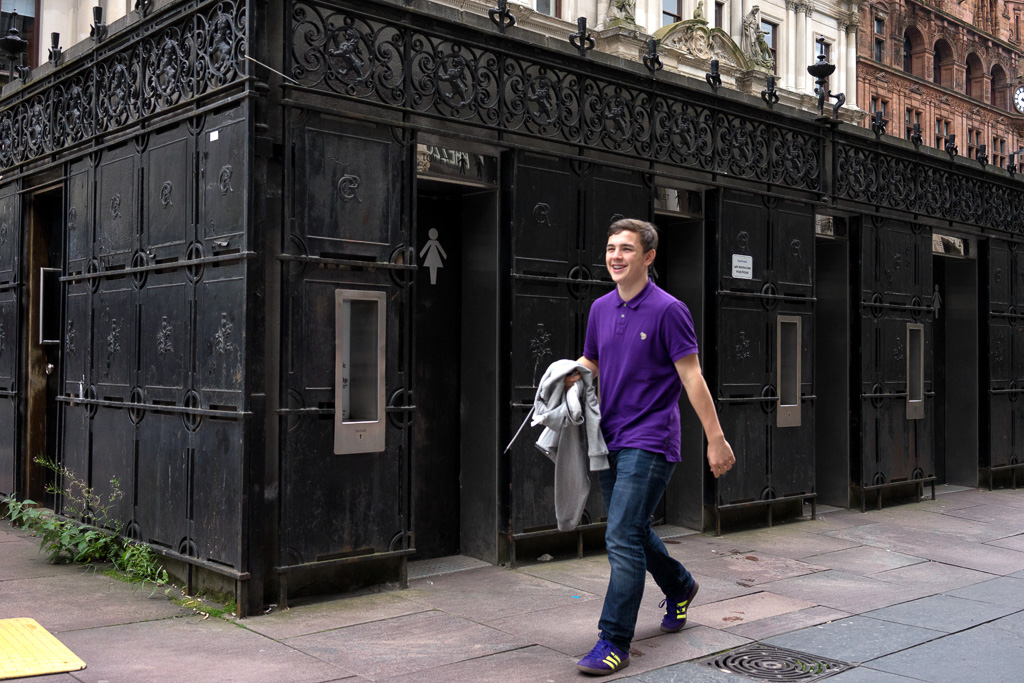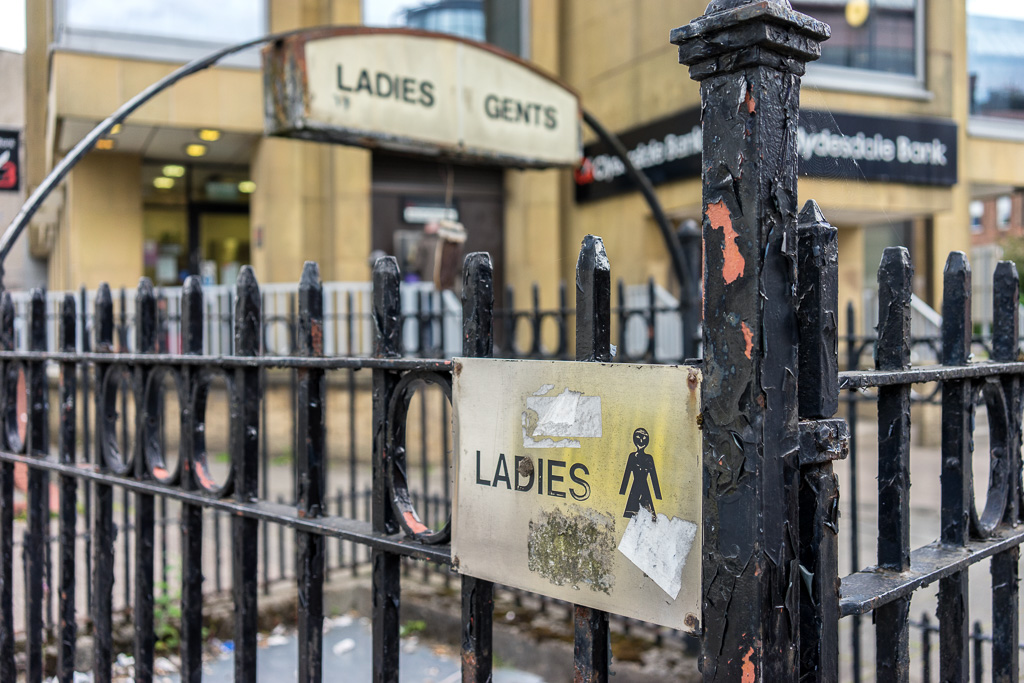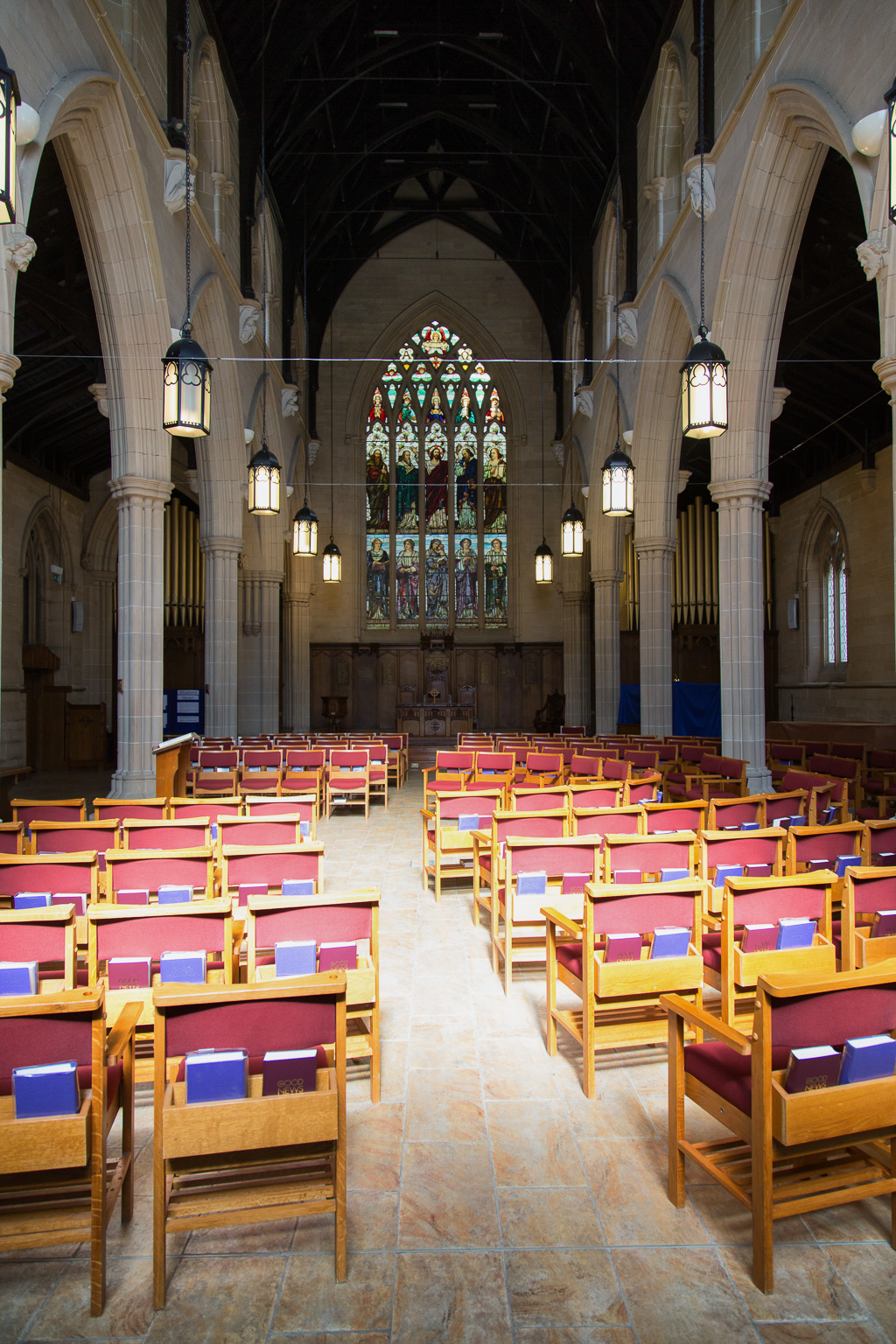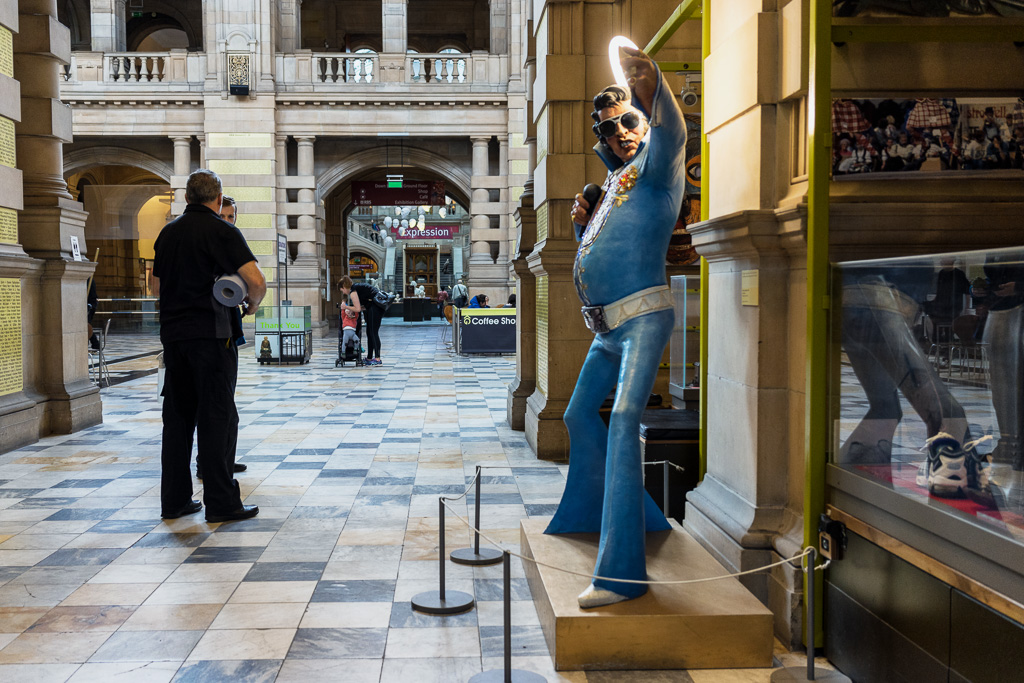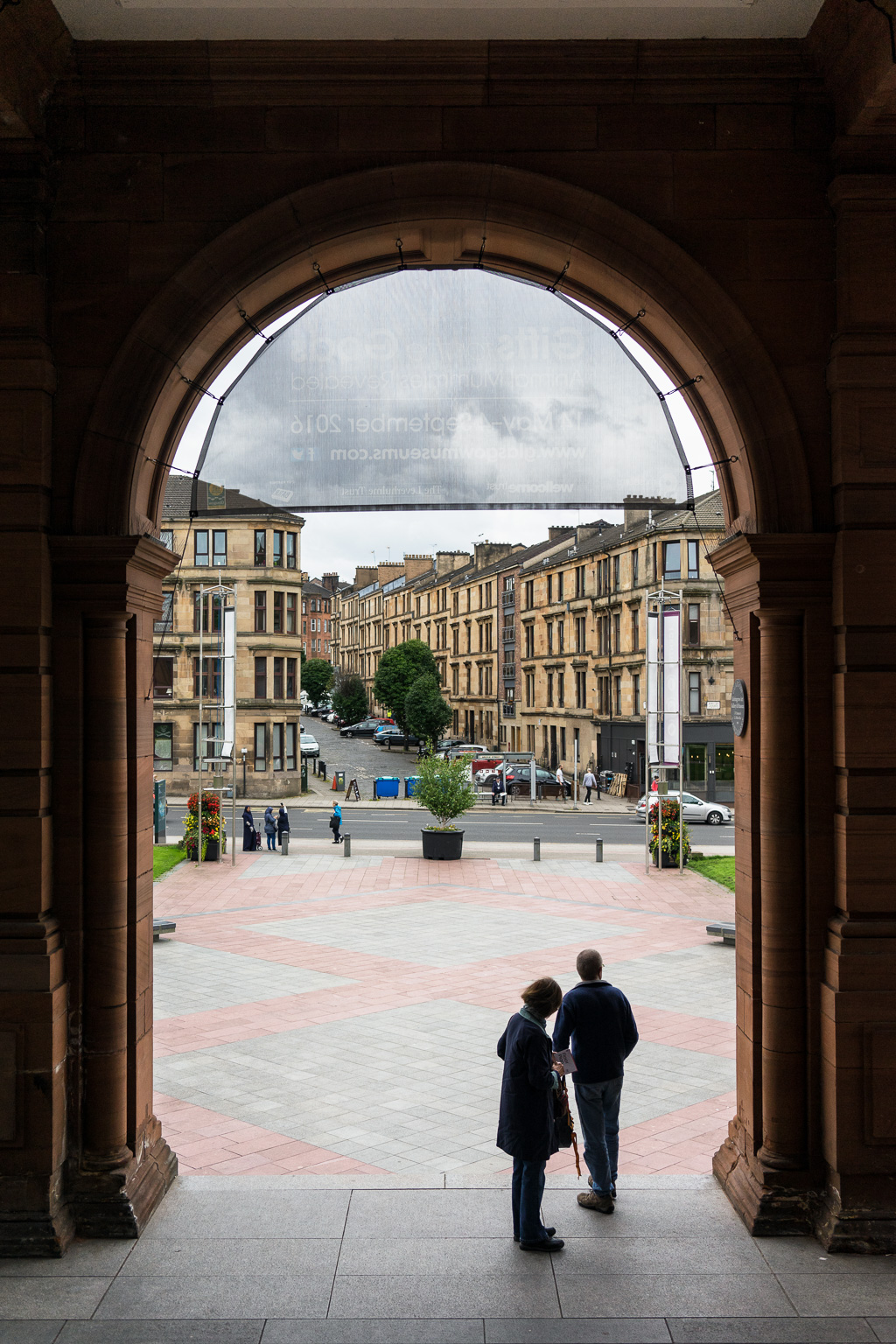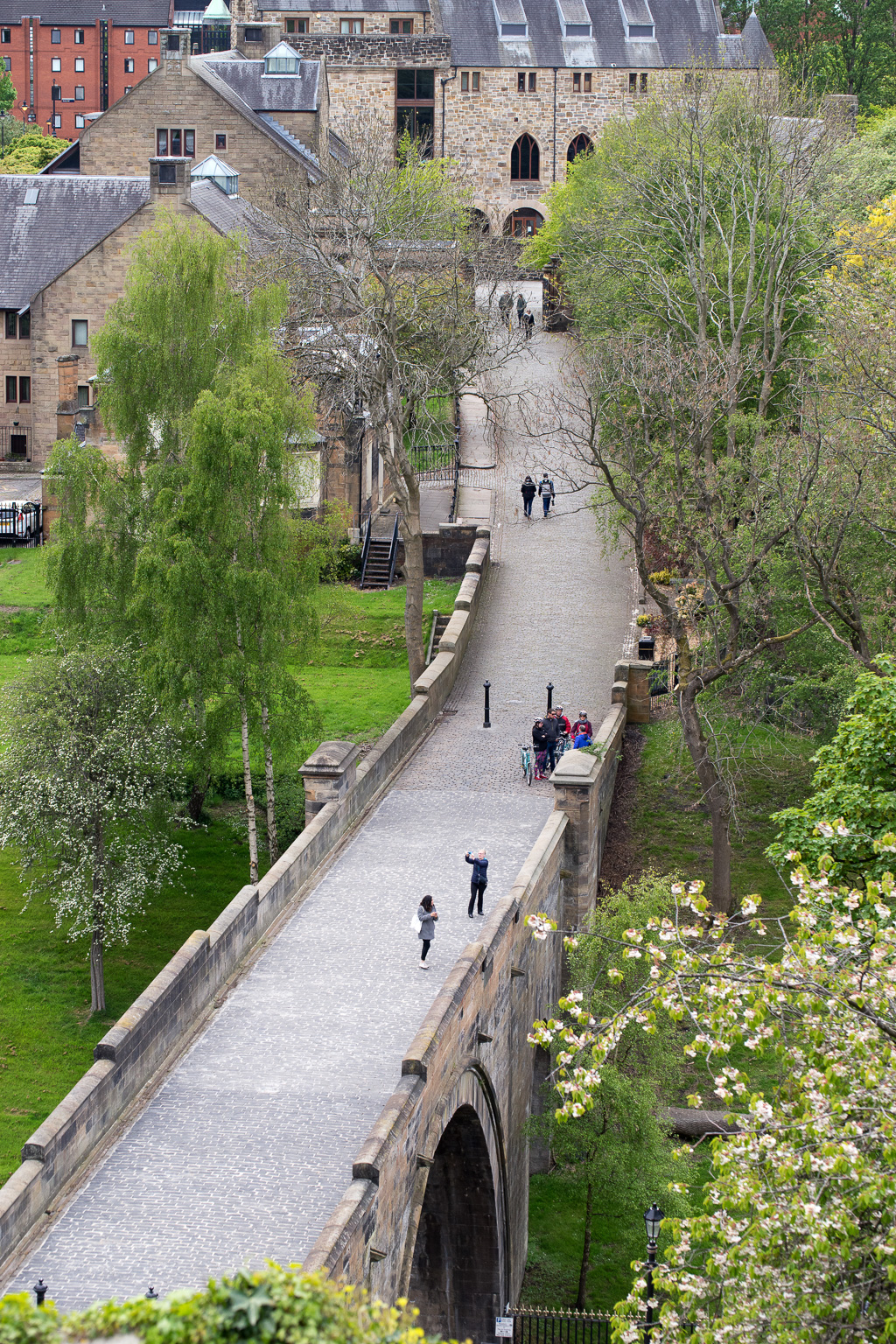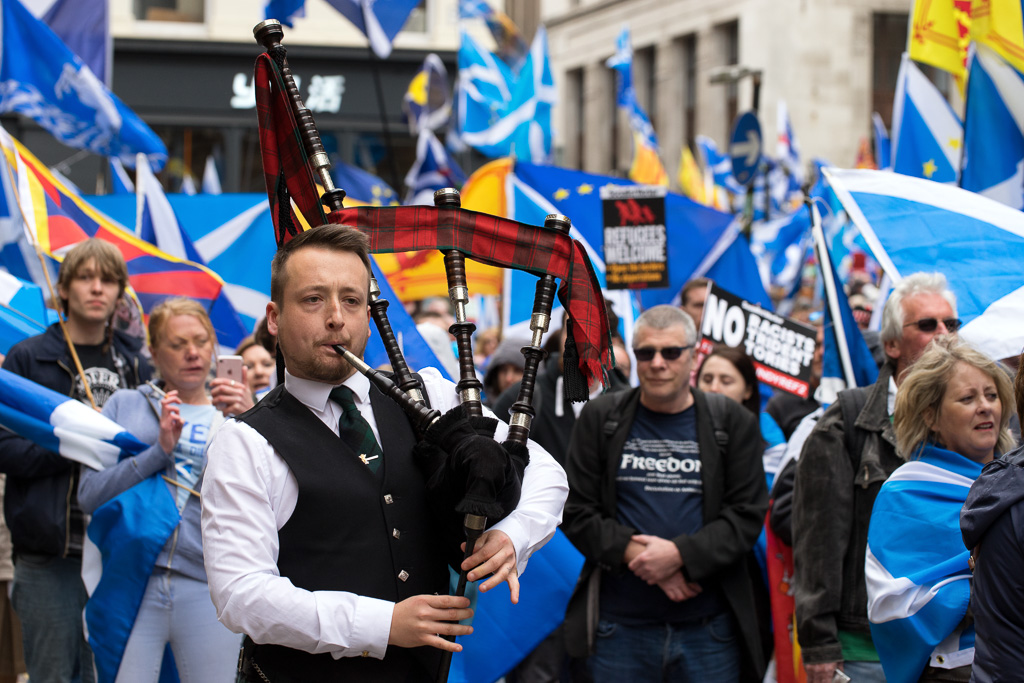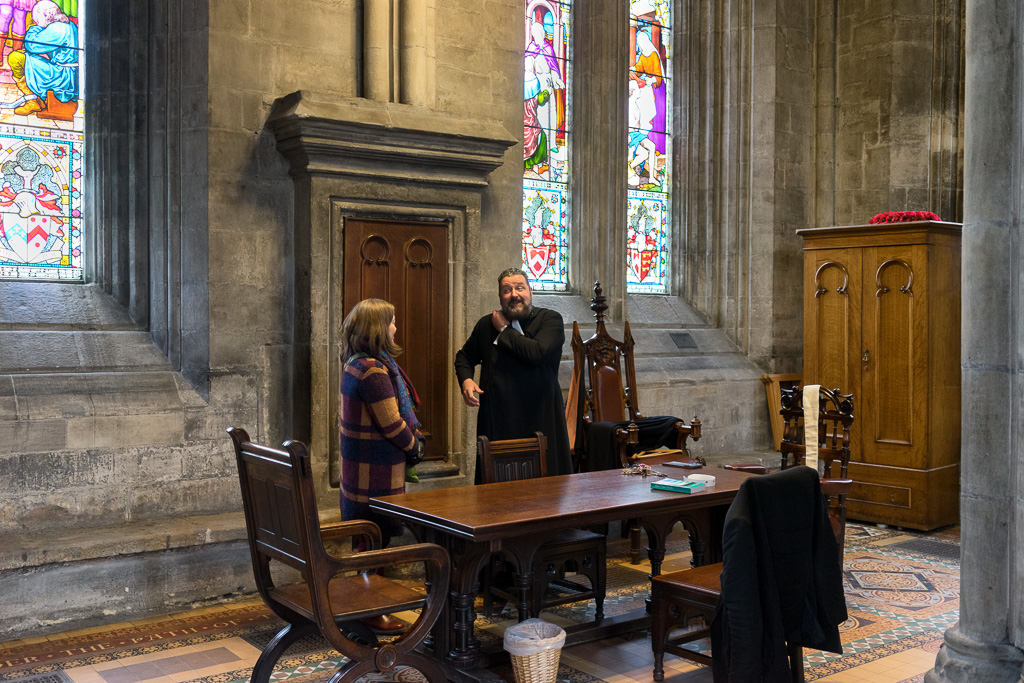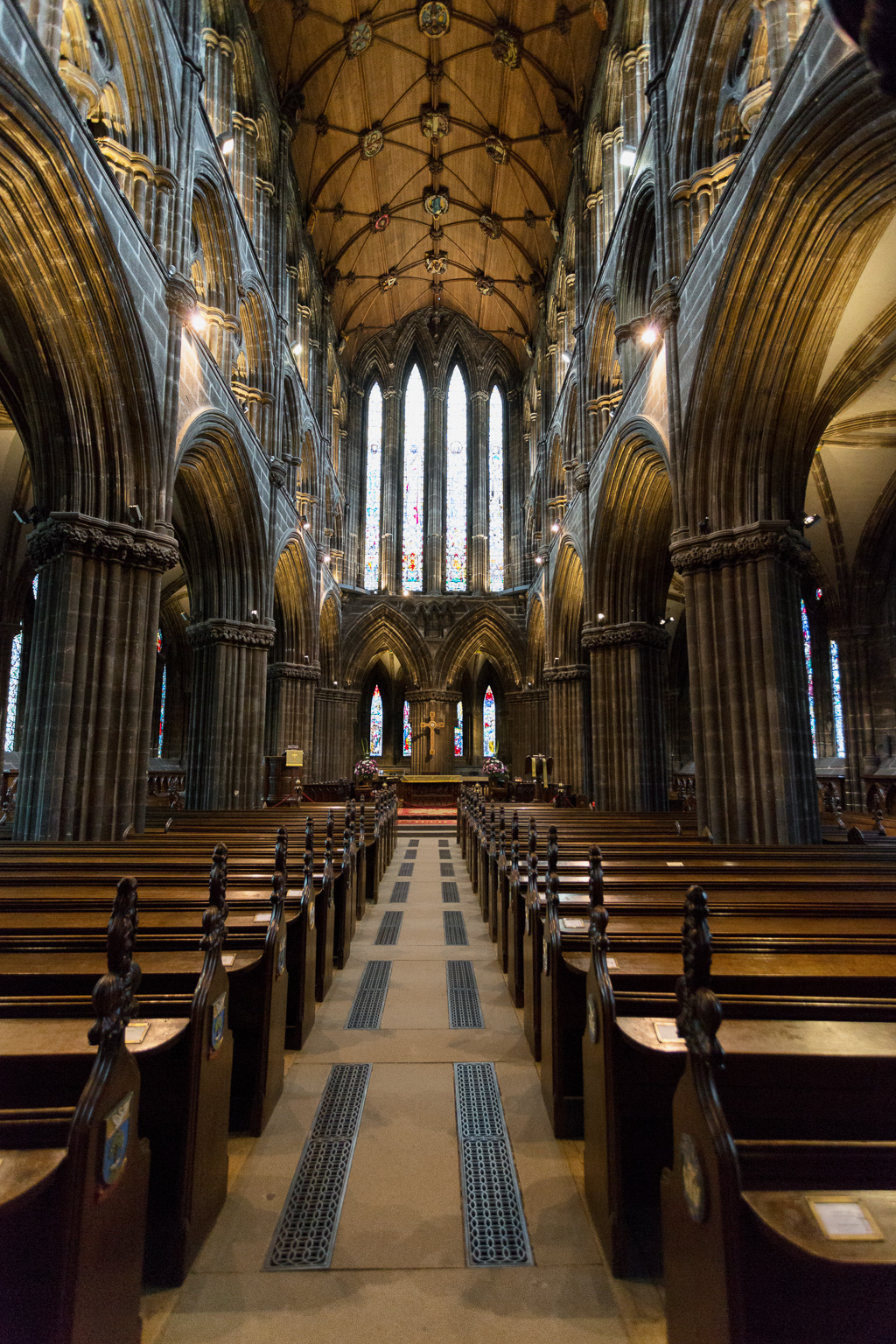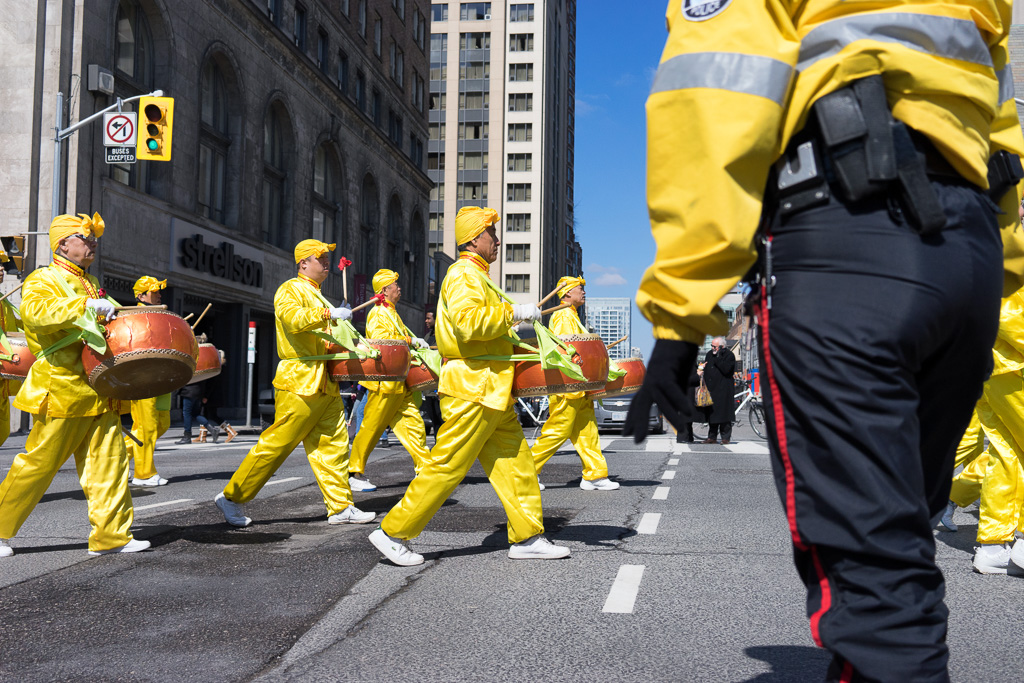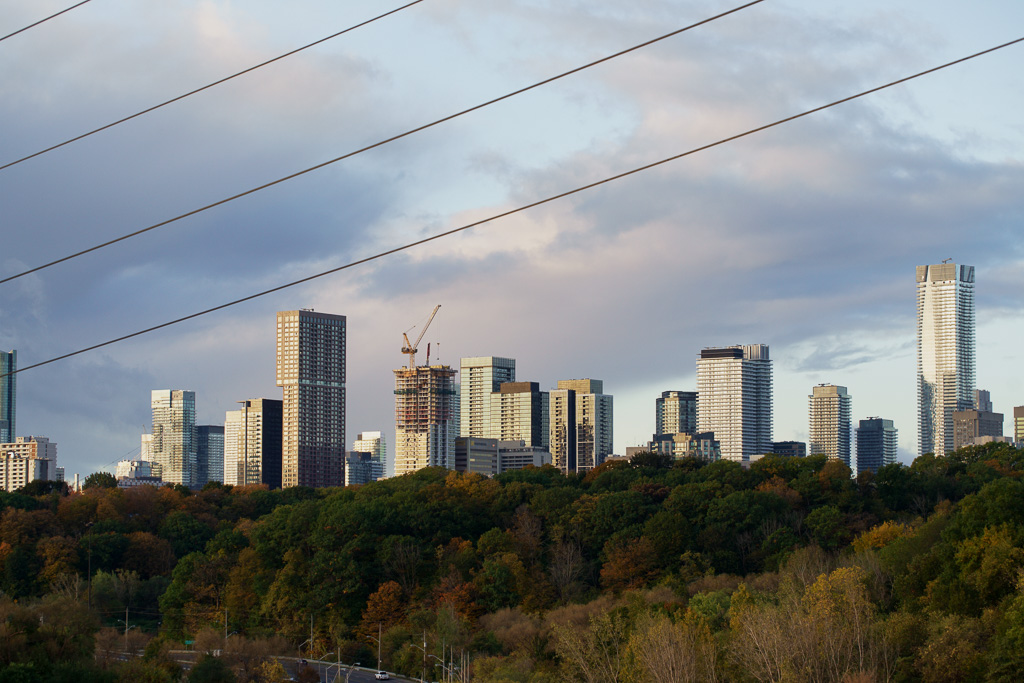Rev. Mark Johnstone, minister of Glasgow Cathedral, has been posting notices on social media promoting special services at the Cathedral during Cop26. Of the 30,000 delegates and support staff descending on the city, presumably some of them will want a quiet place to centre themselves. Here’s a photo of Mark chatting with my wife, Tamiko, in the vestry.
In the early days of the pandemic, Mark broadcast a service in which he included the story of how his friend, Dave, from Canada, once made a complete arse of himself during a service at the Cathedral. The story goes something like this:
A few years ago, before Mark had been called to the Cathedral, he and I went to a vespers service there. Because I was travelling with a small suitcase, I had only one jacket with me, the same jacket I wear when I’m hiking in Northern Ontario, waterproof, all purpose, red (so hunters don’t shoot me), and loaded with handy Velcro straps. During the service, the minister at the time, Laurence Whitley, invited everyone to bow their heads in prayer. I was jet-lagged and happy to fold my arms and slouch low in the pew. But when the prayer was done, I found that the Velcro on my jacket sleeves had stuck to the Velcro on opposite pockets, so I was constrained like a patient in One Flew Over The Cuckoo’s Nest. I was stuck and didn’t know what to do.
The problem is that the Cathedral’s acoustics are extraordinarily “live”. You’ve probably heard the expression: you could hear a pin drop. It applies quite literally to the space where I was seated, what is formally called the choir. Mark saw my situation and started to laugh, quietly of course. I decided there was no choice but to tear away the Velcro straps all at once, like ripping off a band-aid. The noise echoed down the nave. Rev. Whitley lost his train of thought. Mark laughed. And I was free.
In April, 2020, Mark decided the story would make a good sermon illustration. He was trying to get at that feeling of breaking free that we all have craved after our long periods of self-isolation and masking and social distancing. The BBC also broadcast his service so now half the UK knows about his idiot friend named Dave from Canada.
